Banks and financial institutions are always looking for new ways to improve customer experience. It could be by streamlining processes and enhancing security in today’s fast and digital world.
And QR Code technology is one way the banking industry is progressing greatly. Now, you may want to know how your bank or financial services can benefit from this technology.
QR Codes have improved tremendously since they were first used to track inventory. Banks now use them to offer safe and easy services to their customers.
In this article, we look at the transformative ways QR Codes are reshaping the industry.
A. Ways to use QR Codes in banking
1. Paperless information sharing
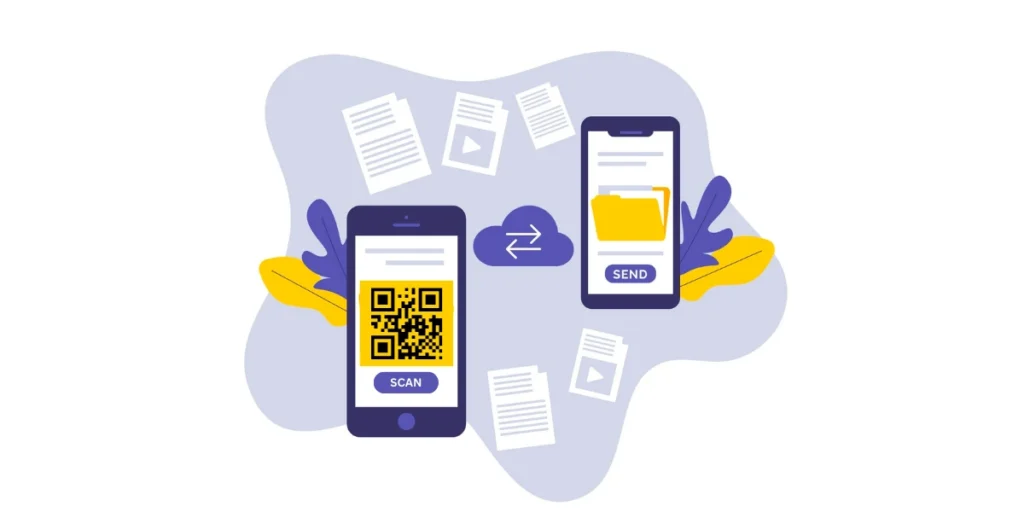
Banking means heaps of paperwork and additional printing costs. But not anymore!
Smart banking systems are going digital to not only cut down on costs but also reduce their carbon footprint. And using QR Codes in banking is one way they’re achieving this.
QR Codes are well-known for effortless information sharing.
Wondering how they can help you? It’s pretty easy.
Rather than printing every document, you can create a Landing Page QR Code which, when scanned, will show the required details to the end users. A landing Page QR Code even helps you share multimedia (images, videos, infographics, audio) and web links. It’s like a webpage of your own.
Alternatively, you can also use a Website URL QR Code to redirect customers to the appropriate web pages on your website.
In addition, a PDF QR Code can also help you in case you’d like to directly share downloadable documents with the customers.
And the best part is that there is no need to mass-print the information again and again.
In case you need to update any information, you can simply make edits within the QR Code content. And your QR Code will remain the same.
2. Contactless payment services
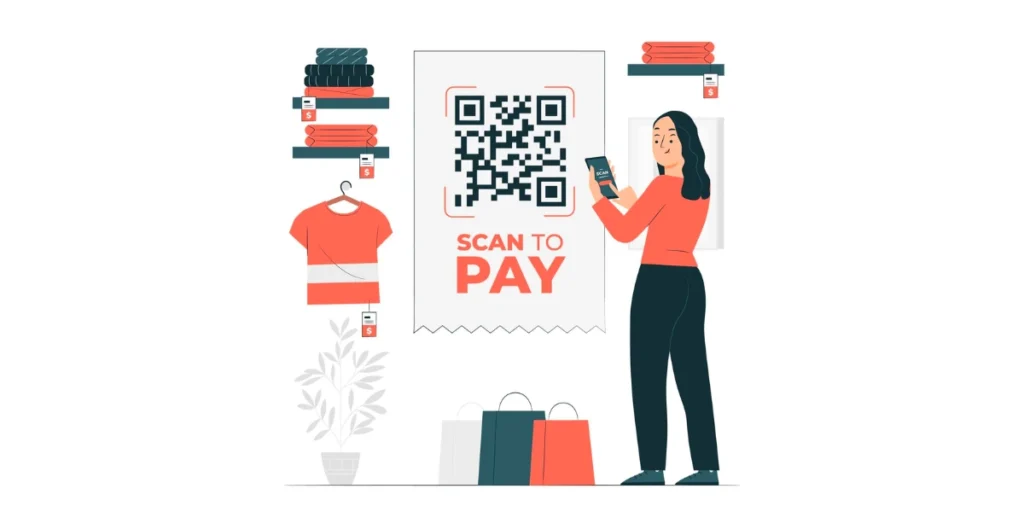
Invented in Japan and widely used in China, QR Codes have quickly become the preferred choice for digital payments since the pandemic.
That’s because of their ease of use. Using QR Codes in banking make it easy for people to make or receive payments with a simple scan.
Hence, banking services often offer QR Codes to facilitate easy payments for their customers. You can even consider it as an alternative to debit cards or checkbooks.
In fact, to help customers withdraw cash at the bank, you can offer them a QR Code instead of the bank withdrawal slip. No need for them to fill out their account details.
A simple scan will help them validate their account details and get the cash in hand quickly.
3. Authentication and security measures
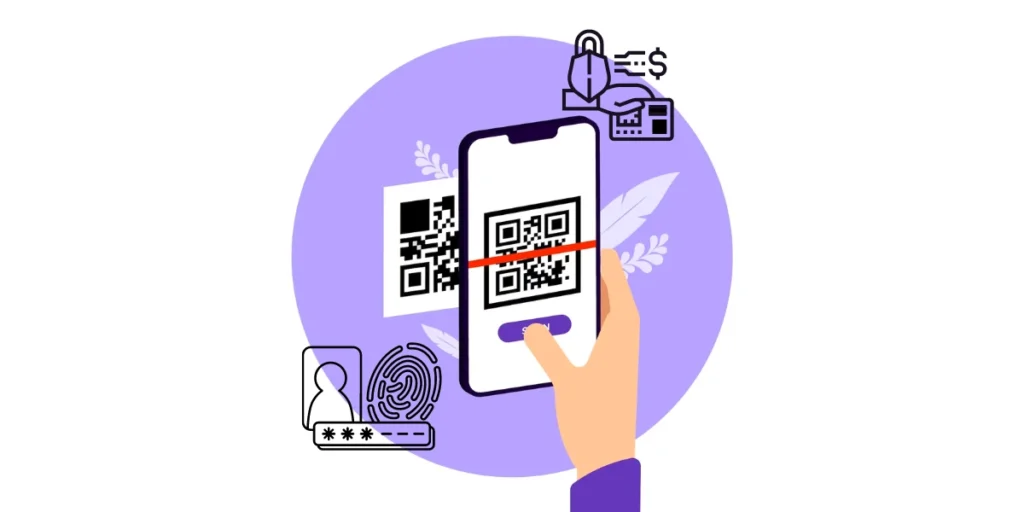
Using QR Codes in banking can also help reinforce security measures as the industry faces new threats. Thanks to their encryption capabilities!
With an increase in fraud and card skimming, stealing of ATM PINs remains a cause of concern.
But what if there was a way to make it impossible for fraudsters to obtain your data? What if we removed the physical card from this process altogether and replaced it with QR Codes?
QR Codes can be used to facilitate cardless ATM transactions and and this is a better alternative as it can serve as two-factor authentication. Wondering how it works?
When users are at an ATM, they choose the Cardless Withdrawal option. It helps them use your bank’s mobile application to scan the QR Code being displayed and authorize the transaction.
This reduces the risk associated with card skimming and Transaction Fraud.
By using QR Codes in banking, we can also be combine them with biometric authentication for added security.
4. Marketing and promotions
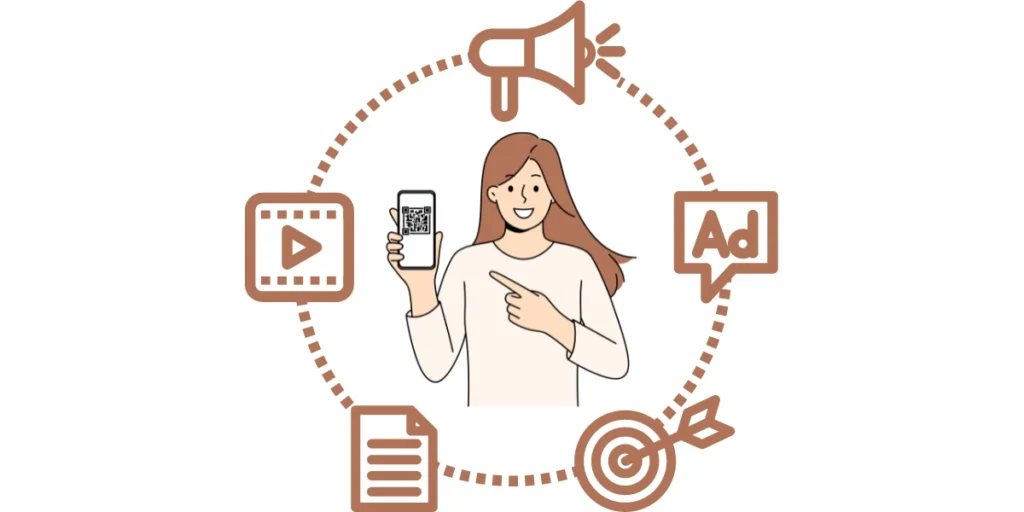
Banks, like any other organization, run promotions. And QR Codes are well-known for bringing life to print media promotions and advertisements. Let us explain how.
Print media is a great medium of promotion. But there is a problem. Print media isn’t actionable. This means that people have to make a manual effort to respond to the ad for example visiting a website, filling out a form, or dialing a number.
This is a time-consuming process and therefore has a low response rate.
Also, with print media, you cannot measure the impact of your campaign.
Therefore, you have to rely on guesstimates to judge the effectiveness of the campaign.
QR codes, however, offer a solution to both of these problems. Let’s understand the pivotal role of QR Codes in marketing.
a. Drive people to your website:
Say you want to drive people to your website or social media page.
This could be to get them to learn about your services, check out your product range, or even make a purchase.
Here, a QR Code on your promotional creatives will be a great help.
QR Codes can simplify this by providing quick links to your websites or social media handles. Your target audience will simply scan the Website QR Code or Social Media QR Code and it’ll redirect them directly to your websites or handles in seconds
b. Offer vouchers and special discounts:
Coupons and special offers are a great way to get new customers for your business as well as retain existing ones. Now you’re probably wondering how QR Codes can help in pushing promotional offers and special discounts.
A Coupon QR Code helps you do just that in a much simpler way.
When scanned, it shows a mobile landing page with offer details and a button that says ‘Redeem’. This means that nobody has to remember the coupon code or carry the coupon around with them all the time.
Using the traditional methods of promotions many coupons go unclaimed. Using a coupon QR Code ensures a hassle-free user experience and leads to higher sales.
c. Boost mobile app downloads:
Nowadays, most banks have their mobile apps. And if you too have a mobile banking app, you’d want people to download it.
And the easiest way to do this is to save people the trouble of searching for the app manually.
Here, a simple App Store QR Code can help you.
d. Build a better strategy for future campaigns:
Like any other organization, banks would also want to measure the performance of their marketing campaign. And by using QR codes in banking you can achieve that easily. They allow you to monitor scanning activity.
This means you can track details such as:
- How many people scanned the QR code
- Where they scanned it
- When they scanned it
- What device do they use to scan it
And all this data can help them better optimize their print promotions. Using the view time and location-based analytics, banks can plan better strategies for future campaigns.
5. Enhancing customer experience and operational efficiency
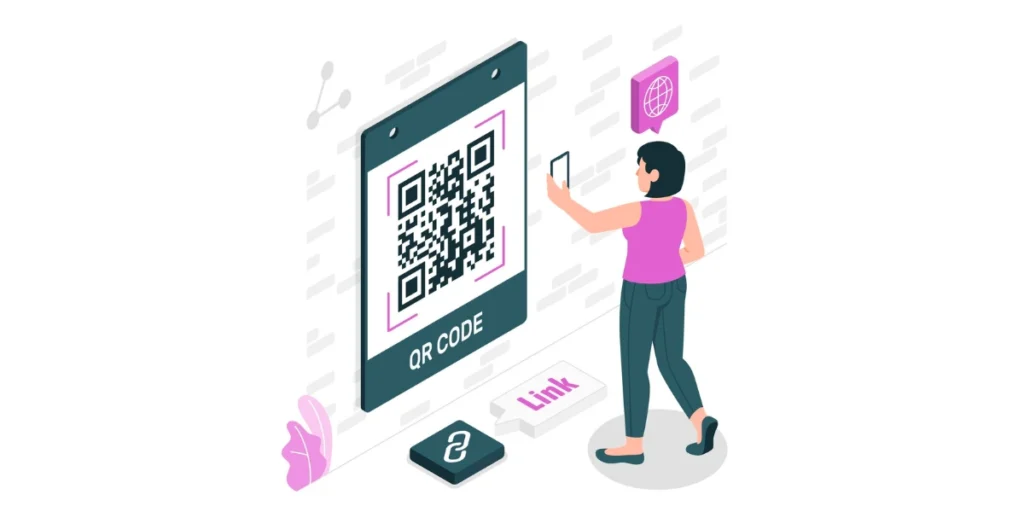
Banking, as mentioned above, needs quite much of paperwork and document sharing.
And while using QR Codes in banking can help you share documents easily, they can also help you collect documents from customers.
Here’s an example of how. Say a customer needs to open an account with your bank. Here, they’ll have to share their ID proofs, residential information, etc.
Now, Instead of submitting physical copies, you can take them to an online portal where they can upload such documents.
And to access this portal, QR Codes will be of great help. The customers can simply scan the QR Code, access the portal, and upload the documents.
To do that, you could have an information system or portal of your own.
This will serve three purposes. First, there will be little to no queues at your bank. Second, it’ll also minimize your printing costs. And finally, it will also offer a hassle-free experience to the customers.
Needless to say, when customers are delighted, they stick around for longer.
Generate a QR Code For Your Unique Case
START TODAY!
B. Looking ahead: The future of QR Codes in banking
A report by Grand View Research revealed that the market value of QR Code based transactions reached close to $10 billion in 2022. And, according to market forecasts, this figure is set to rise to $33.13 billion by 2030.
The continued growth in the use of QR Codes in banking is driven by the increasing shift to contactless payments, especially after the COVID-19 pandemic, as well as improving financial inclusion and access to banking services.
Considering the current statistics, using QR Codes in banking is not just a passing trend in the industry. They are here to stay and will continue to evolve.
C. Will people even scan my QR Code?
We have curated a detailed guide to explain everything you must know about QR Codes.
And in case you’re wondering if people will even bother scanning the QR Code, we have the answer.
According to reports, 91% of US consumers have used a QR code at least once. From 2017 to 2021, QR Code engagements increased by a stunning 6,200%, showing an important trend in technology and marketing worldwide.
If you’re wondering why the numbers are huge, that’s because using QR Codes in banking makes the whole process very easy.
All the end-users need is a smartphone with a camera and internet connection. Most smartphones have in-built QR Code scanners. And the ones that don’t, can simply use the Google Lens application.
To explore the possibilities of QR Codes in banking, you can use Scanova’s QR Code Generator.
D. How to generate QR Code for banking
Ready to create QR Codes for your banking use case? Great. Using Scanova, here’s a detailed step-by-step guide to get you started:
1. Visit Scanova from your preferred browser.
2. Select a suitable QR Code category based on the information you want to encode. For example, if you want to add a link to the QR Code, select the Website URL Category.
3. Next, add the required content to the QR Code and move ahead to the next step.
4. On the page that loads, name your QR Code and click Create QR Code.
5. On the screen that loads, you’ll see a QR Code on the right with the Edit Design option under it. Click on it if you’d like to add colors, a logo, or a background image to personalize the QR Code design.
6. Once you’re done, you can save changes and download your QR Code
Note that clicking on the Download button will prompt you to sign up for a 14-day free trial. Don’t worry, you’ll not have to give away your card details.
7. After you sign up, you can download your QR Code.
Make sure that you test the QR Code before putting it to public use.
Generate a QR Code For Your Unique Case
START TODAY!
E. FAQs: QR Codes in banking and financial institutions
1. How can the use of QR Codes in banking facilitate paperless exchange of information?
QR Codes provide a quick and effortless way to share information without the need for printing. By scanning a landing page QR Code, users can access text, multimedia, and graphics, eliminating the need for physical copies. Updating information is easy by editing the existing landing page.
2. What is QR Code based login in banking, and how is it more secure than traditional methods?
QR Code-based login replaces traditional username/password combinations. Users scan a QR Code displayed on the banking website or ATM machine from their registered smartphones. Hence by using QR Codes in banking, you can provide a secure and convenient authentication method.
3. How do QR Codes mitigate the risk of card skimming and fraud?
By removing the physical card from the process, QR Codes make it difficult for fraudsters to obtain sensitive data, enhancing security during transactions. By inculcating QR Codes in banking you can revamp security and avoid the risk of card skimming and fraud.
4. Can QR Codes be customized for branding purposes?
Yes, QR Codes can be customized with colors and logos to align with branding. This adds a personalized touch to their appearance while maintaining functionality.
5. How can QR Codes in banking industry improve the customer onboarding process?
QR Codes can streamline document collection during customer onboarding. Customers can use a QR Code to go online and upload documents. This will reduce waiting time, save money on printing, and make things easier. Delighted customers are more likely to remain loyal to the bank.
6. Are QR Codes used in physical bank branches, and if so, how do they enhance customer engagement?
Yes, QR Codes in physical branches of banks offer quick access to information about services, promotions, or contact details. This enhances customer engagement by providing relevant information efficiently without any waiting in queues.
7. Is it complicated to integrate QR Code systems with existing infrastructure?
Integrating QR Code systems can be seamless with sophisticated tools. Scanova offers QR Code API that helps businesses integrate QR code generation into their own information systems.
8. How can banks use QR Code analytics to improve customer engagement?
Using QR Codes in banking not only provides better methods for marketing but also helps you plan future marketing strategies. Analyzing QR Code data allows banks to understand customer behavior, preferences, and engagement patterns. This insight can be used to tailor future marketing efforts and enhance overall customer experience.
9. Can QR Codes be used in the context of investment and trading, and how do they facilitate access to relevant platforms?
Yes, using QR Codes in banking can facilitate better access to investment and trading platforms. Users can scan a code to quickly access relevant services or investment portfolios, streamlining the process.
10. Are there any age or technology barriers for using QR Codes in banking?
While QR Codes are designed to be user-friendly, some customers, particularly those unfamiliar with smartphones, may need additional assistance. Banks can offer support and tutorials to bridge any technology gaps.
Conclusion
In Conclusion, QR Codes are a great tool for banking and financial institutions in today’s digital age. They are versatile and efficient.
In the ever-changing landscape of financial institutions, using QR Codes in banking sector will enhance the customer experience, redefine operational standards, and strengthen security measures.
The unassuming QR Code is undoubtedly driving the path to a leaner, secure, and customer-centric financial industry.
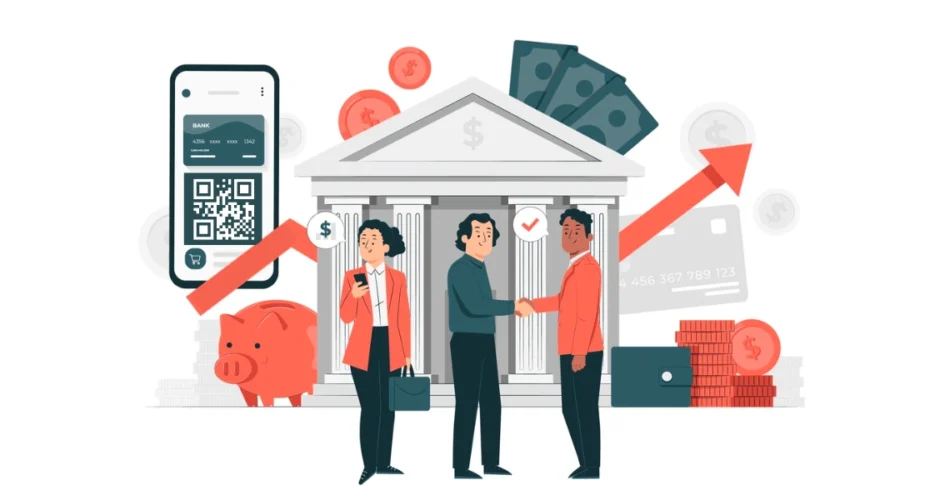
Your insights on integrating QR codes in banking for customer excellence are groundbreaking. It’s like unlocking a new level in the game of seamless transactions.
The way you decode the potential of QR codes is nothing short of revolutionary. It’s like turning traditional banking into a tech-driven symphony, where every beep and scan orchestrates a harmonious experience for customers.